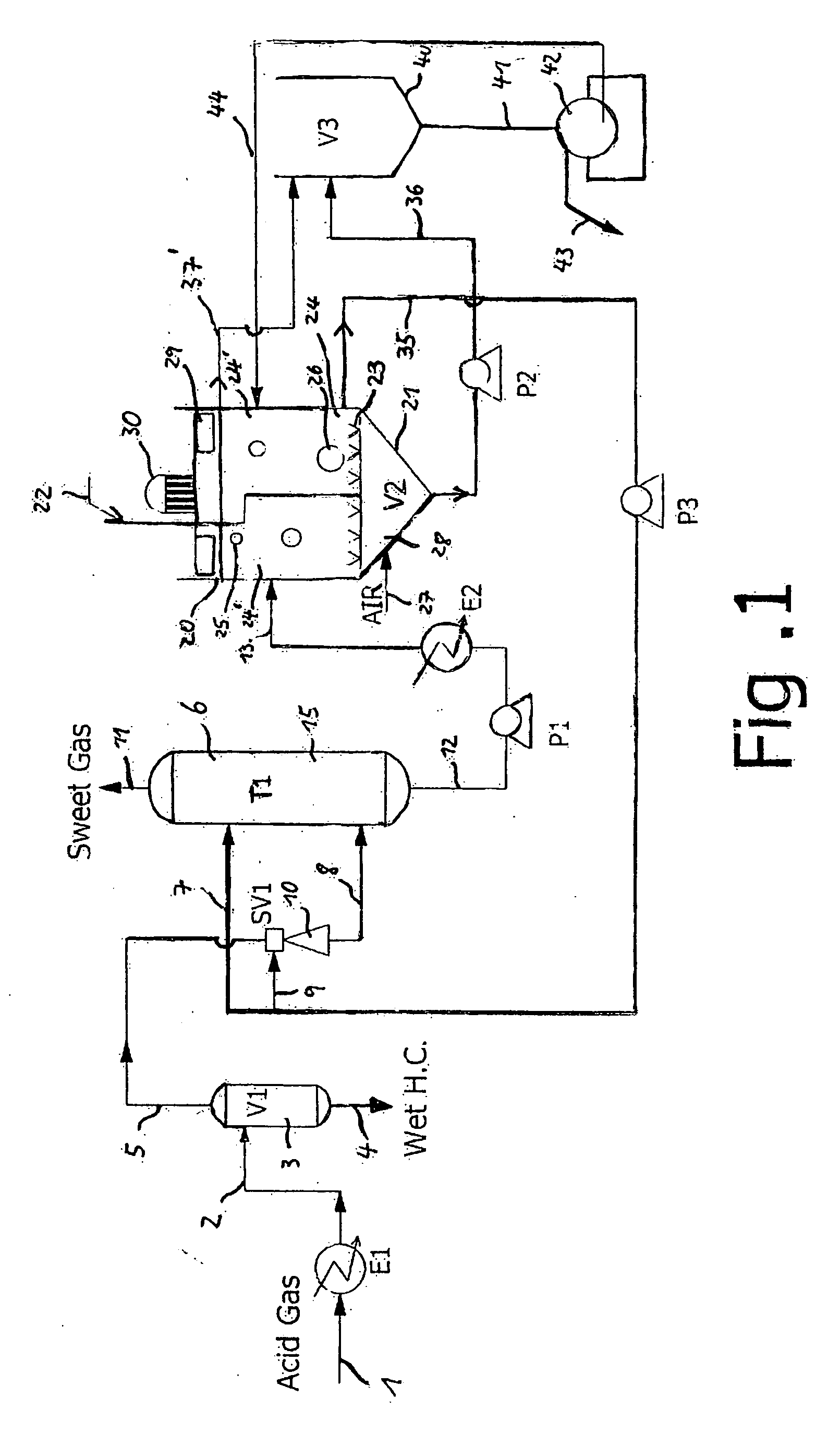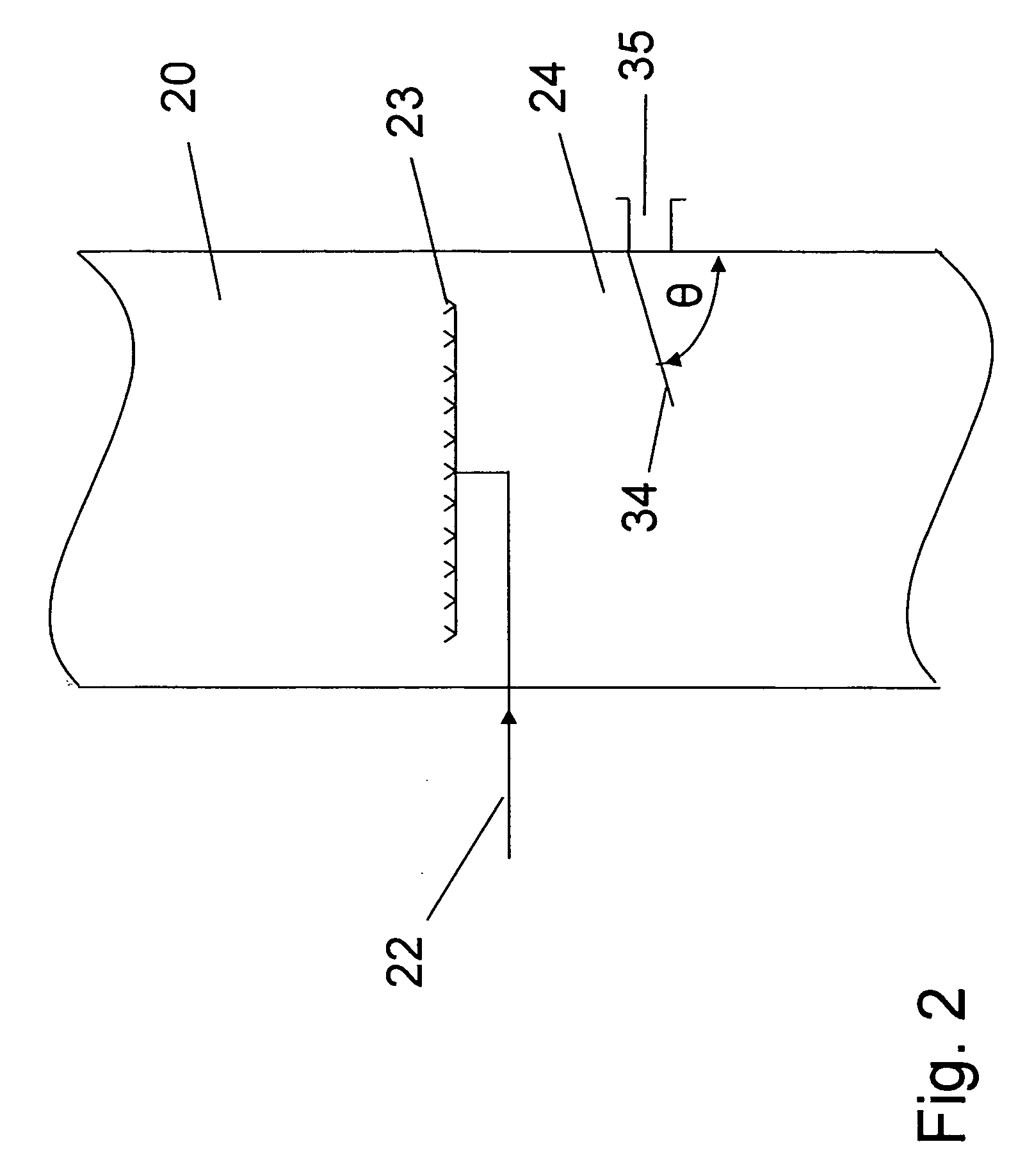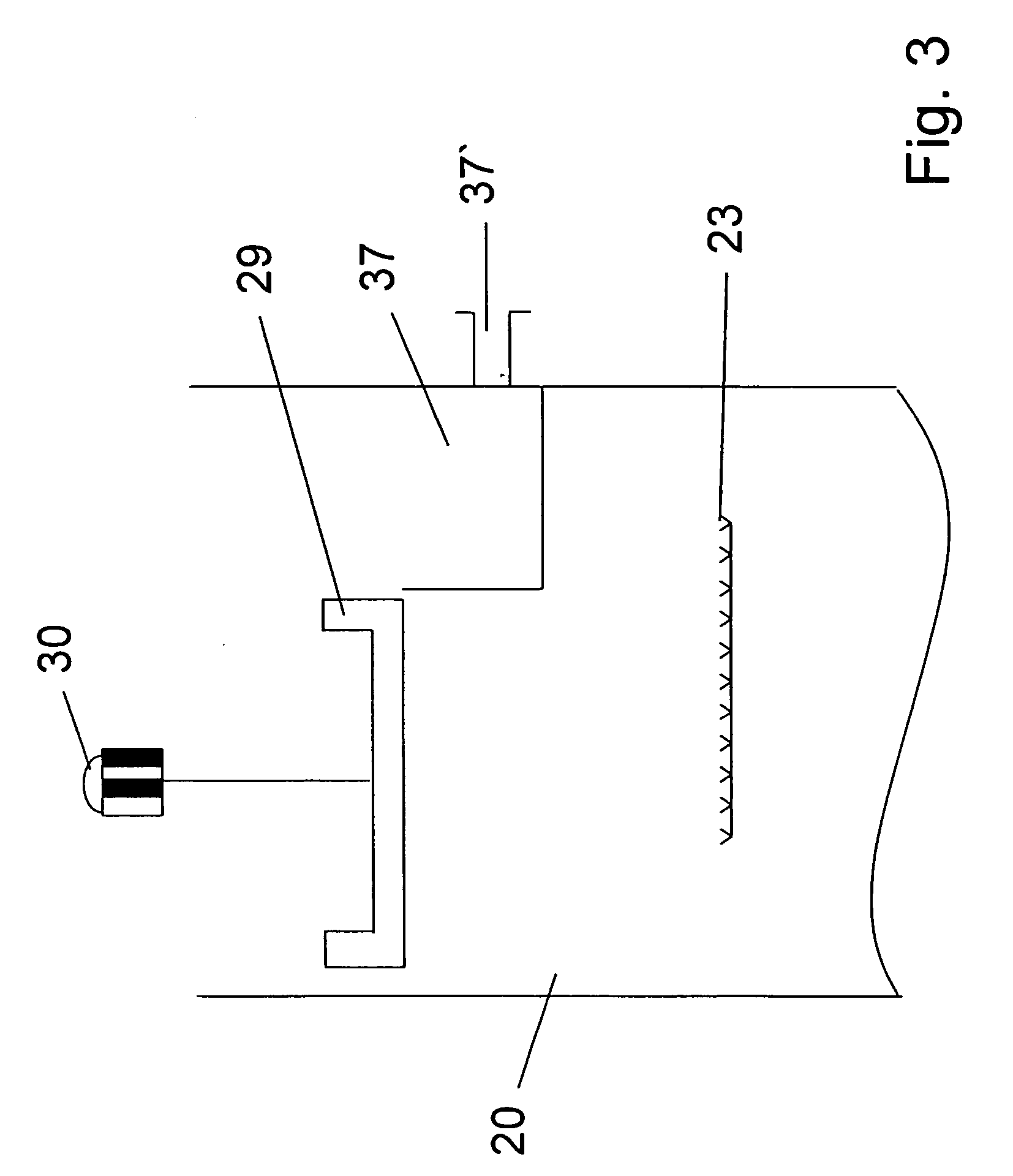Process for removing sulfur particles from an aqueous catalyst solution and for removing hydrogen sulfide and recovering sulfur from a gas stream
- Summary
- Abstract
- Description
- Claims
- Application Information
AI Technical Summary
Benefits of technology
Problems solved by technology
Method used
Image
Examples
Embodiment Construction
[0040] The present invention relates to the reduction of foaming and plugging in processes where H2S is separated from H2S-containing gas streams, by being contacted with an aqueous catalyst solution comprising a chelate of a polyvalent metal ion, which is preferably an iron chelate.
[0041] As shown in FIG. 1, the overall process comprises three major sections, namely the contact zone 6, the oxidizer zone 20 and the separator zone 40. As shown in FIG. 1, a sour or acid gas 1 is fed via a heat exchanger E1 and line 2 to a gas-liquid-separator 3, which separates any liquid heavy hydrocarbons and water to line 4, as outlined further below. The separated gaseous hydrocarbons are fed via line 5, Venturi scrubber 10 and line 8 to the contact zone 6. More specifically, the acid or sour gas stream 8 enters the contact zone 6 at a bottom part thereof.
[0042] The contact zone 6 can be an absorber, a static mixer, a venturi scrubber or a combination thereof. Preferably, according to the presen...
PUM
| Property | Measurement | Unit |
|---|---|---|
| Temperature | aaaaa | aaaaa |
| Temperature | aaaaa | aaaaa |
| Time | aaaaa | aaaaa |
Abstract
Description
Claims
Application Information
 Login to View More
Login to View More - R&D
- Intellectual Property
- Life Sciences
- Materials
- Tech Scout
- Unparalleled Data Quality
- Higher Quality Content
- 60% Fewer Hallucinations
Browse by: Latest US Patents, China's latest patents, Technical Efficacy Thesaurus, Application Domain, Technology Topic, Popular Technical Reports.
© 2025 PatSnap. All rights reserved.Legal|Privacy policy|Modern Slavery Act Transparency Statement|Sitemap|About US| Contact US: help@patsnap.com



